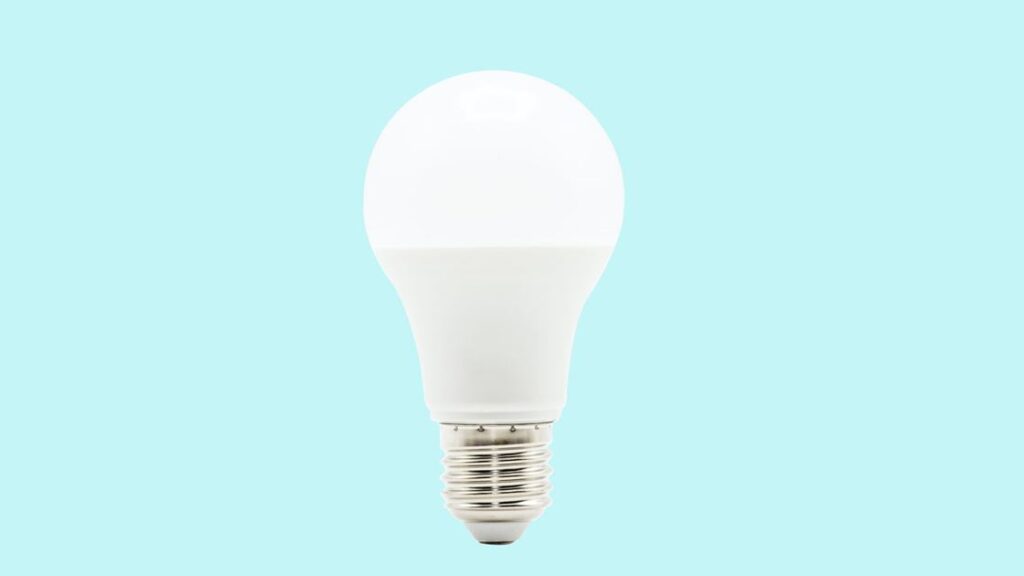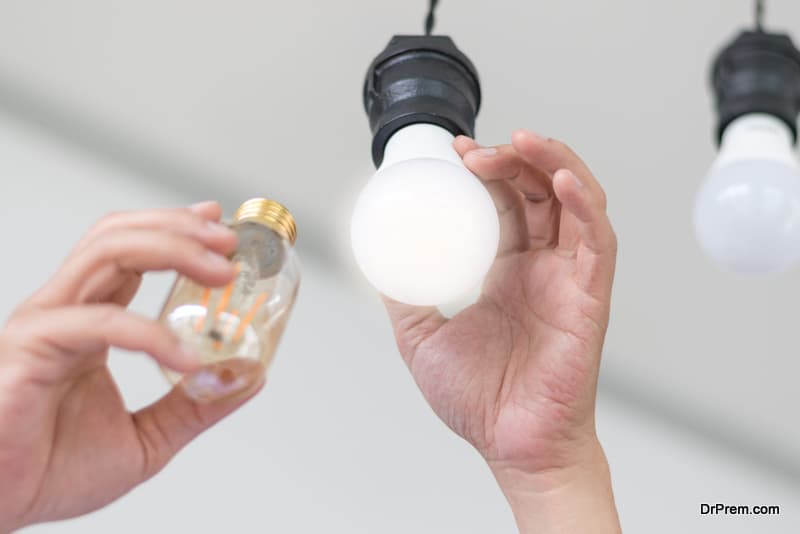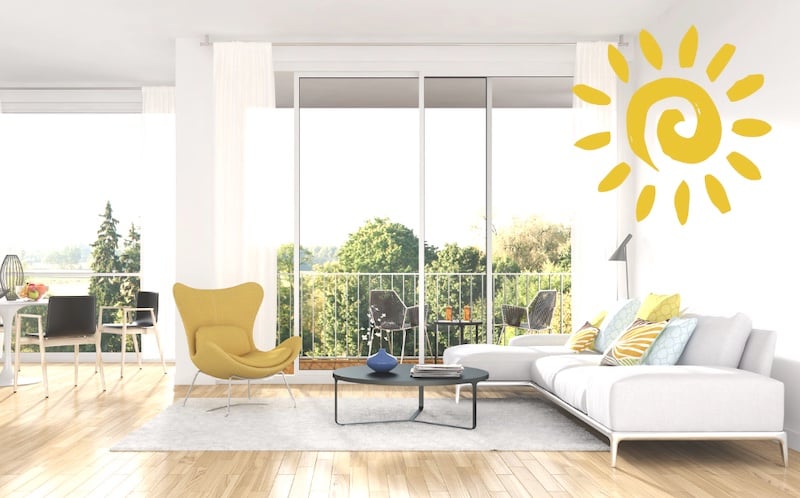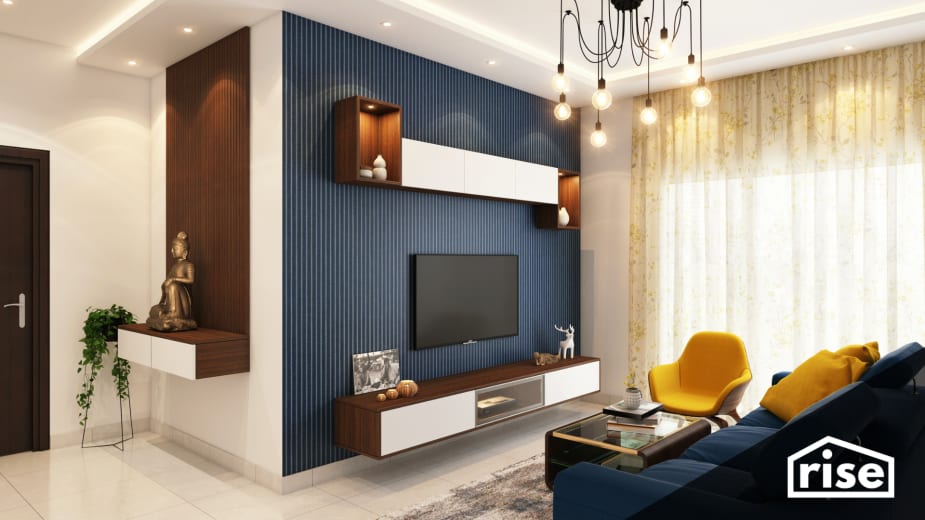
Are you searching for ways to save energy and reduce your electricity bills? Look no further! Our article, “The Ultimate Guide for Choosing Energy-Efficient Lighting for Your Home,” provides you with practical tips and expert advice on selecting the perfect energy-efficient lighting for your living spaces. From understanding the different types of bulbs available to evaluating their energy ratings and lifespan, we have all the information you need to make informed decisions and create an environmentally friendly home. So, let’s illuminate your path to a brighter and more sustainable future!

This image is property of www.efficiencyvermont.com.
Understanding Energy-Efficient Lighting
Energy-efficient lighting is a smart and sustainable choice for your home. By opting for energy-efficient lighting options, you can significantly reduce your energy consumption while enjoying numerous benefits. Understanding the different types of energy-efficient lighting technologies, factors to consider, how to choose the right bulbs, selecting appropriate light fixtures, and decoding lighting labels are all key aspects of making informed decisions when it comes to energy-efficient lighting.
Benefits of Energy-Efficient Lighting
Energy-efficient lighting offers a range of advantages that make it a popular choice among homeowners. Firstly, it helps in reducing energy consumption, leading to lower electricity bills. Energy-efficient lighting is capable of providing the same amount of light as traditional lighting options, while using significantly less energy. This reduction in energy usage also has a positive impact on the environment, as it helps in curbing greenhouse gas emissions.
Furthermore, energy-efficient lighting options tend to have a longer lifespan compared to traditional alternatives. This means that you won’t have to replace bulbs as frequently, saving you time and money on maintenance. Additionally, many energy-efficient lighting options are compatible with dimmers, allowing you to adjust the brightness according to your needs and create different atmospheres for various occasions.
Different Types of Energy-Efficient Lighting Technologies
There are several types of energy-efficient lighting technologies available today. Understanding the differences between these options will help you make an informed decision for your home.
LED Bulbs
LED bulbs, or Light Emitting Diode bulbs, are highly energy-efficient and long-lasting. They use significantly less energy than traditional incandescent bulbs and have a lifespan that is many times longer. LED bulbs are available in a variety of colors and color temperatures, making them suitable for various lighting needs and preferences.
CFL Bulbs
Compact Fluorescent Lamp bulbs, or CFL bulbs, are another popular energy-efficient lighting option. They use less energy than incandescent bulbs and have a longer lifespan. CFL bulbs also emit less heat, making them safer to use. However, they take a short amount of time to reach full brightness and contain a small amount of mercury, requiring proper disposal.
Halogen Bulbs
Halogen bulbs are a more energy-efficient alternative to traditional incandescent bulbs, as they use less energy to produce the same amount of light. They have a longer lifespan compared to incandescent bulbs and can be dimmed to create different lighting effects. However, halogen bulbs generate more heat and can be a fire hazard if not used with caution.
Incandescent Bulbs
Traditional incandescent bulbs are the least energy-efficient option available. They use a significant amount of energy and have a relatively short lifespan. While they are inexpensive, their inefficiency makes them less sustainable and cost-effective in the long run.
Smart Bulbs
Smart bulbs are a recent innovation in energy-efficient lighting. These bulbs can be controlled remotely through smartphone apps or voice assistants, allowing you to adjust the brightness and color temperature according to your preferences. Smart bulbs usually utilize LED technology, making them energy-efficient and long-lasting.
Factors to Consider Before Choosing Energy-Efficient Lighting
Before making a decision on energy-efficient lighting options, there are several factors you should consider to ensure that you choose the best fit for your home and needs.
Estimated Energy Consumption
Determining the estimated energy consumption of different lighting options is crucial. This will help you understand the potential savings that can be achieved by switching to energy-efficient lighting. It’s important to compare the wattage and lumen output of different bulbs to get a clearer understanding of their energy efficiency.
Color Temperature and CRI
Color temperature is an important factor to consider, as it determines the warmth or coolness of the light emitted. Different color temperatures are suitable for different areas of the home, depending on the desired ambiance and functionality. The Color Rendering Index (CRI) is another important consideration, as it measures the light’s ability to accurately render colors.
Lighting Fixture Compatibility
When choosing energy-efficient lighting options, it’s essential to consider the compatibility of the bulbs with your existing lighting fixtures. Some fixtures may require specific types of bulbs or have limitations on bulb size and shape. Ensuring the compatibility of bulbs and fixtures will save you from surprises during installation.
Longevity and Durability
Considering the lifespan of different lighting options is vital, as it affects maintenance costs and bulb replacement frequency. Energy-efficient bulbs, particularly LED and CFL bulbs, generally have longer lifespans compared to traditional incandescent bulbs. Additionally, considering the durability and reliability of bulbs is crucial, especially for fixtures that may undergo outdoor or heavy-duty use.
Dimmability
If you prefer to have control over the brightness levels in your home, it’s important to choose energy-efficient bulbs that are compatible with dimmer switches. Not all bulbs are dimmable, so be sure to check the packaging or product specifications before making a purchase.
Price and Return on Investment
While energy-efficient lighting options may have a higher upfront cost than traditional alternatives, it’s important to consider the long-term savings they can provide. Calculating the return on investment (ROI) by factoring in reduced energy consumption and longer lifespan can help you make an informed decision.

This image is property of drprem.com.
Choosing the Right Bulbs
Once you have a clear understanding of your lighting needs and preferences, choosing the right bulbs becomes easier. Each type of energy-efficient bulb has its own unique advantages and considerations.
LED Bulbs
LED bulbs are highly recommended for their energy efficiency, long lifespan, and versatile applications. They are available in a range of colors, including warm white, cool white, and daylight, allowing you to create different moods and lighting effects throughout your home. LED bulbs are compatible with dimmer switches, making them suitable for various lighting scenarios.
CFL Bulbs
CFL bulbs provide a good balance between energy efficiency and affordability. They are available in different color temperatures and wattages, making them suitable for different areas of your home. However, CFL bulbs take a short amount of time to reach full brightness and may not be compatible with all dimmer switches.
Halogen Bulbs
Halogen bulbs are a popular choice for homeowners looking for a bright, white light similar to traditional incandescent bulbs. They have a longer lifespan compared to incandescent bulbs and can be dimmed. However, halogen bulbs generate more heat and should be used with caution, especially in fixtures that may come into contact with flammable materials.
Incandescent Bulbs
While incandescent bulbs are the least energy-efficient option, they are still available for purchase. They are inexpensive and emit a warm, flattering light. However, their short lifespan and energy inefficiency make them a less sustainable choice.
Smart Bulbs
Smart bulbs offer the convenience of controlling your lighting from anywhere using your smartphone or voice commands. They usually utilize LED technology, ensuring energy efficiency and long lifespan. Smart bulbs also allow you to adjust brightness, color temperature, and even set schedules or routines for automated lighting.
Selecting Appropriate Light Fixtures
Choosing the right light fixtures is crucial to ensure proper illumination and aesthetics in your home. Consider the following types of light fixtures for different areas and lighting needs.
Outdoor Lighting Fixtures
Outdoor lighting fixtures should be durable, weatherproof, and energy-efficient. Opt for fixtures with LED bulbs, as they are well-suited for outdoor applications. Wall-mounted lanterns, floodlights, and pathway lights all contribute to the safety and ambiance of your outdoor space.
Indoor Lighting Fixtures
Indoor lighting fixtures come in a wide variety of styles and designs, allowing you to enhance the overall aesthetic of your home. When selecting fixtures, consider the type of lighting required for each room. Options include flush-mount ceiling lights, semi-flush-mount lights, sconces, and track lighting.
Ceiling Lights
Ceiling lights come in different styles, including chandeliers, pendant lights, and recessed lights. Chandeliers add an elegant and luxurious touch to your space, while pendant lights offer versatility and a contemporary look. Recessed lights blend seamlessly into the ceiling and provide a clean and modern aesthetic.
Recessed Lighting
Recessed lighting, also known as can lights or downlights, is a popular choice for providing general lighting in various areas of the home. They are discreet and offer a clean and modern look. Recessed lights can be used in kitchens, bathrooms, hallways, and living areas to create a well-lit and visually appealing atmosphere.
Desk and Floor Lamps
Desk and floor lamps provide task lighting and can be easily moved around to suit your needs. Opt for energy-efficient bulbs, such as LED or CFL, and choose the appropriate color temperature for the intended use. Adjustable or dimmable lamps offer flexibility in creating the desired lighting conditions.
Chandeliers and Pendant Lights
Chandeliers and pendant lights are ideal for creating a focal point and adding a touch of sophistication to your space. They come in a variety of styles, sizes, and materials, allowing you to find the perfect fit for your home. Consider installing dimmer switches to adjust the brightness and set the mood.
This image is property of images.buildwithrise.com.
Understanding Lighting Labels
Decoding lighting labels is important to make informed decisions when choosing energy-efficient lighting options.
ENERGY STAR Certification
The ENERGY STAR certification is an indicator of energy efficiency and performance. Look for the ENERGY STAR label on lighting products, as it ensures that the product meets specific criteria for energy savings and quality.
Lumens vs Watts
Lumens indicate the brightness or light output of a bulb, while watts measure the energy consumption. When comparing bulbs, consider the lumens rather than the watts to determine the amount of light emitted.
Color Temperature Labels
Color temperature labels indicate the warmth or coolness of the light emitted by a bulb. A lower color temperature (around 2700K) produces a warm, yellowish light similar to traditional incandescent bulbs, while a higher color temperature (around 5000K) produces a cool, bluish light.
CRI Labels
The Color Rendering Index (CRI) measures the ability of a light source to accurately render colors. Higher CRI values indicate better color accuracy. Look for bulbs with a CRI of 80 or above for optimal color representation.
Design Considerations
When planning your lighting design, consider the following techniques to enhance the functionality and aesthetics of your space.
Creating Task Lighting
Task lighting is essential for areas where specific activities are performed, such as reading, cooking, or working. Use dedicated lighting fixtures or positioning to ensure proper illumination of the task at hand.
Ambient Lighting
Ambient lighting provides overall illumination to a room. It sets the mood and ensures a comfortable and inviting atmosphere. Use a combination of fixtures, such as ceiling lights, wall sconces, or track lighting, to achieve balanced ambient lighting.
Accent Lighting
Accent lighting is used to highlight specific objects, architectural features, or artwork in a room. This type of lighting creates visual interest and adds a layer of depth to the overall design. Wall-mounted spotlights, track lights, or picture lights are commonly used for accent lighting.
Lighting Control Systems
Consider implementing lighting control systems to enhance energy efficiency and functionality. These systems allow you to control your lighting settings, such as adjusting brightness or turning lights on and off, through centralized control panels, remote controls, or smartphone apps.

This image is property of www.unsustainablemagazine.com.
Extra Tips for Energy Efficiency
To maximize energy efficiency in your home, consider the following tips and practices.
Utilizing Natural Light Sources
Make the most of natural light by keeping windows unobstructed and utilizing light-colored window treatments. This will reduce the need for artificial lighting during daylight hours.
Using Timers and Motion Sensors
Installing timers and motion sensors in certain areas of your home, such as bathrooms or hallways, ensures that lights are only turned on when needed. This helps in reducing unnecessary energy consumption.
Regular Maintenance
Regularly clean and inspect your lighting fixtures and bulbs to ensure they are functioning optimally. Dust and debris can reduce the amount of light emitted, impacting energy efficiency.
Proper Fixture Placement
Ensure that fixtures are appropriately placed to provide adequate illumination while minimizing shadowing or glare. Proper placement can enhance energy efficiency by utilizing light effectively.
Energy-Efficient Lighting Design Techniques
Consider implementing lighting design techniques such as layered lighting, zoning, and appropriate fixture selection to optimize energy efficiency. These techniques ensure that the appropriate amount and quality of light is provided for different functional areas of your home.
Comparing Energy-Efficient Lighting Options
To help you make an informed decision, here is a comparison of energy-efficient lighting options.
LED Bulbs vs CFL Bulbs
LED bulbs are more energy-efficient than CFL bulbs. They have a longer lifespan, higher color rendering index, and are generally available in a wider range of color temperatures. However, CFL bulbs are often more affordable and provide a good balance between energy efficiency and cost.
LED Bulbs vs Halogen Bulbs
LED bulbs are significantly more energy-efficient than halogen bulbs and have a longer lifespan. LED bulbs also emit less heat, making them a safer option. While halogen bulbs are cheaper upfront, their higher energy consumption and shorter lifespan make them less cost-effective in the long run.
LED Bulbs vs Incandescent Bulbs
LED bulbs are far more energy-efficient than incandescent bulbs. They use significantly less energy and have a much longer lifespan. Incandescent bulbs, on the other hand, are inexpensive upfront but have a short lifespan and high energy consumption. Switching to LED bulbs can result in substantial energy savings.

This image is property of www.attainablehome.com.
Installation and DIY
If you choose to install energy-efficient lighting yourself, it’s important to follow proper safety precautions and guidelines.
Safety Precautions
Ensure that you turn off the power supply to the lighting fixture before attempting any installation or replacement. Use appropriate tools and wear protective gear to minimize the risk of electrical shocks or accidents.
Replacing Bulbs and Fixtures
When replacing bulbs or fixtures, refer to the manufacturer’s instructions for proper installation and compatibility. Ensure that the new bulbs or fixtures are securely in place and that all wiring connections are tight. If you are unsure, consult a licensed electrician for assistance.
Proper Wiring and Electrical Work
If the installation requires complex wiring or electrical work, it is recommended to hire a licensed electrician. They have the expertise to ensure that the correct wiring is used, and all electrical connections are properly installed and meet safety standards.
Conclusion
Choosing energy-efficient lighting for your home is a wise investment that brings numerous benefits. By understanding the different types of energy-efficient lighting technologies, considering key factors before making a choice, selecting appropriate bulbs and fixtures, and decoding lighting labels, you can create a well-lit and energy-efficient home. With proper planning, design considerations, and the utilization of extra tips for energy efficiency, you can achieve optimal lighting while reducing energy consumption. By making informed decisions and enjoying the benefits of energy-efficient lighting, you can contribute to a more sustainable future for yourself and the environment.






